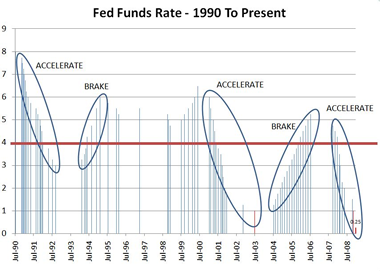Can $150 Million Turn Around Detroit?
SEARCH BLOG: DETROIT.
The Kresge Foundation has announce a $150 million grant to the city of Detroit following more than $100 million dollars invested over the last decade. From The Wall Street Journal:
The problems Detroit faces are systemic and endemic. Vacant or abandoned property accounts for more than 1/4 of the 138 square miles occupied by only about 700,000 people. Corrupt government and unions, an under-educated population more interested in "black" politics than good government, and the flight of businesses despite heroic efforts by a few, have left the city a shell of its former self.One of the nation’s largest foundations will spend $150 million over the next five years to implement a new land-use plan in an attempt to revitalize this ailing industrial city.
The announcement comes as Michigan’s governor is weighing whether to appoint an emergency manager for Detroit because it is running out of cash. A decision could come this month.
The Kresge Foundation, the nation’s 17th-largest grant-making foundation by assets, according to the Foundation Center, invested more than $100 million in Detroit over the past decade to construct a riverfront promenade, build greenways and help fund a new 3.4-mile downtown trolley line that is expected to receive federal support.
The new philanthropic investment—about $120 million in new funding beyond previously announced programs—is a sign that the foundation based in Troy, Mich., just north of Detroit, and its leader, Rip Rapson, are doubling down on the future of the city despite its chronic fiscal woes.
Mr. Rapson said he had confidence other foundations and government programs would follow Kresge’s lead with more funding. “The value will be multiplied if we invest together and strategically,” he said in an interview.
Urban planners say many plans similar to the new Detroit blueprint have had disappointing outcomes, relegated to bookshelves as cities struggled find the resources and political will to implement a long-term vision.
But Prof. Robin Boyle, chairman of the department of urban studies and planning at Wayne State University here, said the new Detroit framework is encouraging. “It has the opportunity to set a new direction and a new tone that the city has to be smaller, tighter and more dense.” He cited Philadelphia as an aging industrial city that has made strides in finding new uses for its vacant and underused property.
He cautioned, though, that the plan may fail to address the growth in the city’s suburbs where many jobs will still lie. More pressing, he said, is how Detroit will continue to serve residents in sparsely populated areas even as they hope to turn those into parks, farms or urban forests. [read more]
It may not be salvageable in its present configuration and considering that even after $100 million dollars investment, Detroit is on the verge of complete fiscal failure. Another $150 million over the next five years may only beautify the corpse.
UPDATE From Forbes:
Coleman Young, the mayor of Detroit from 1974 to 1993, was able to “move forward as he did” thanks in part to training he got from the “party”—that is, the Communist Party. Young was, in fact, a secret member of Communist Party USA, as shown by several sources, including Cold War historians Ron Radosh, John Earl Haynes, and Harvey Klehr. Young had a woeful impact on Detroit. If there is any wonder why Detroit often resembles an Eastern Bloc municipality (minus the police state, since Mayor Young made it a routine to attack and neglect the city’s police forces, ensuring that the 1967 riots picked up where they left off), consider that for 19 years the mayor who ran the city economically and socially was a closet Marxist. Carl Levin, senator from Michigan, was Young’s right-hand man as Detroit City Council president during the most destructive years of Young’s reign.That has to be taken with a grain of salt, however. The author is not what would normally be deemed an "expert" and his sources may not be deemed "reliable."
RELATED:








